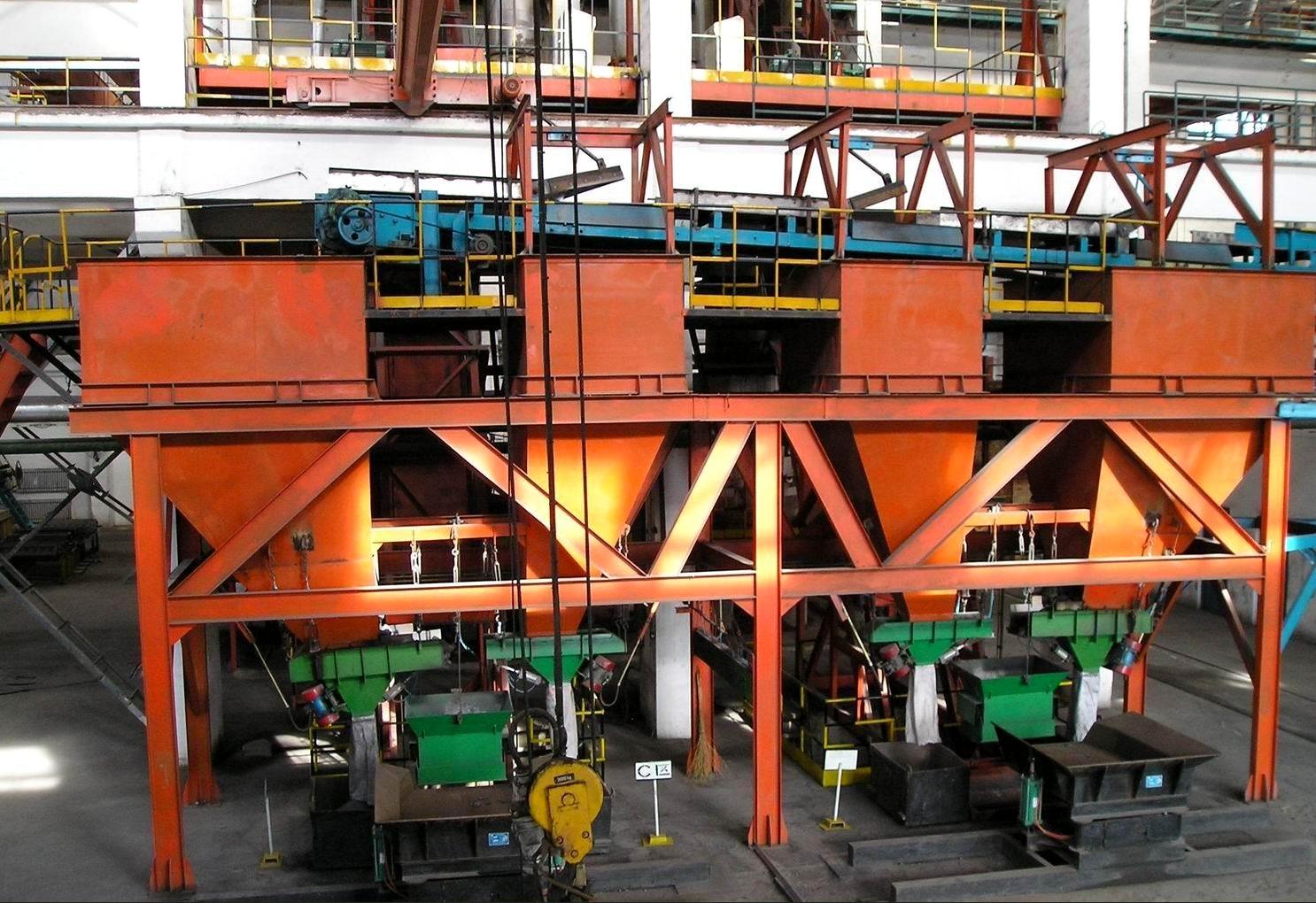This casting batching method is too detailed and practical! It is recommended that the casting people collect it!


One. Casting method:
green sand casting, manual modeling.
Two. The formula of modeling materials:
1. Back sand: new sand 5%, old sand 94%, bentonite 1%.
2. Surface sand: new sand 40.4%, old sand 50%, bentonite 4.5%, coal powder 4%, heavy oil 1%, sodium carbonate 0.1%.
3. Core sand: 52% new sand, 40% old sand, 6% clay, 2% syrup.
Three. Determination of the chemical composition of HT200:
The main wall thickness of the casting: 15-30mm
Chemical composition: C: 3.1-3.5, Si: 1.8-2.1, Mn: 0.7-0.9, P<0.15, S<0.12
Fourth, determine the ratio of the charge to the furnace
1. Newborn iron
According to the characteristics of the induction furnace for smelting cast iron, in order to ensure the normal microstructure, the amount of pig iron ingots in the charge should not exceed 20%. Therefore, the proportion of nascent iron is selected as 20%, and the amount of nascent iron added:
150 kg*20%=30 kg
2. Scrap Steel
In order to make the charge with sufficient carbon content, the proportion of scrap steel is 23%, and the amount of scrap steel added is:
150 kg*23%=34.5 kg
3. Return material
The adding amount of the reheating material is: 150kg-30kg-34.5kg=85.5kg
Five. Calculate the due content of each element in the charge
1. The charge should contain carbon
The average carbon content required by the molten iron (C molten iron) should be equal to the carbon content required by the blank (C1), that is, the C molten iron = C1, and the carbon smelting burning loss is 1%, then the C charge = C molten iron/(1-0.01 )=C1/0.99
Because the carbon content C1 required for the blank is known to be 3.3%
So C charge = C molten iron/1-0.01=C1/0.99=3.3/0.99=3.33%
Check the actual carbon content of the charge: the carbon content brought by the new iron: C2=4.0*20%=0.8%
The amount of carbon brought into the furnace: C3=4.15*57%=2.37%
The amount of carbon brought in by scrap steel: C4=1.0*23%=0.23%
So the actual carbon content of the charge is C=2C+3C+4C=0.8%+2.37%+0.23%=3.4%
2. The charge should contain silicon
The average silicon content required by the molten iron (Si molten iron) should be equal to the silicon content required by the blank (Si1), that is, the Si molten iron = Si1, and the silicon smelting burning loss is 6%, then the charge Si=Si molten iron/(1-0.06 )=Si1/0.94
Since the required silicon content Si1 of the blank is known to be 1.95%, the charge Si=Si molten iron/(1-0.06)=Si1/0.94=1.95/0.94=2.07%
Check the actual silicon content of the charge:
The silicon content brought in by the new iron: Si2=1.85%*20%=0.37%
The silicon content brought into the furnace charge: Si3=1.5%*57%=0.855%
The silicon content of scrap steel: Si4=0.26%*23%=0.05%
So the actual silicon content of the charge is Si=Si2+Si3+Si4=0.37%+0.855%+0.06%=1.285%
The amount of silicon remaining in the charge = the amount of silicon contained in the charge-the actual silicon content in the charge
=2.07%-1.285%=0.785%
3. The charge should contain manganese
The average manganese content (Mn molten iron) required by the molten iron should be equal to the manganese content (Mn1) required by the blank, that is, Mn molten iron = Mn1, and the manganese smelting burning loss is 8%. Known as 0.8%, so charge Mn=Mn molten iron/(1-0.08)=0.8/0.92=0.87% , check the actual manganese content of the charge:
The amount of manganese brought into the new iron: Mn2=0.03%*20%=0.006%
The amount of manganese brought into the furnace: Mn3=0.7%*57%=0.399%
The amount of manganese brought into the scrap steel: Mn4=0.25%*23%=0.058%
So the actual manganese content in the charge:
Mn=Mn2+Mn3+Mn4=0.006%+0.399%+0.058%=0.463%
The amount of manganese remaining in the charge = the manganese content of the charge-the actual manganese content of the charge = 0.87%-0.463%=0.407%
Six. Calculate the amount of ferroalloy added
1. The amount of ferrosilicon added
The percentage of adding 75% silicon ferrosilicon = the amount of silicon remaining in the charge (%) / the silicon content of ferrosilicon (%)=0.785/75%=1.05% That is, adding 1.05 kg of ferrosilicon for every 100 kg of charge Silicon is 75% ferrosilicon. Then 150 kg of charge is added with 75% silicon-containing ferrosilicon as follows:
1.5*1.05 kg=1.57 kg
2. Addition of ferromanganese
The percentage of ferromanganese with 65% manganese content = the lack of ferromanganese in the charge (%)/the content of ferromanganese (%)=0.407%/65%=0.626%
That is, for every 100 kg of charge, add 0.626 kg of manganese 65% ferromanganese then 150 kg of charge add manganese 65 to the amount of ferromanganese: 1.50.626 kg=0.939 kg
Seven, ingredient list
|
Charge name |
Adding amount (kg) |
|
Newborn Iron |
30 |
|
Scrap steel |
34.5 |
|
Recharge |
85.5 |
|
75 ferrosilicon |
1.57 |
|
65 ferromanganese |
0.939 |

